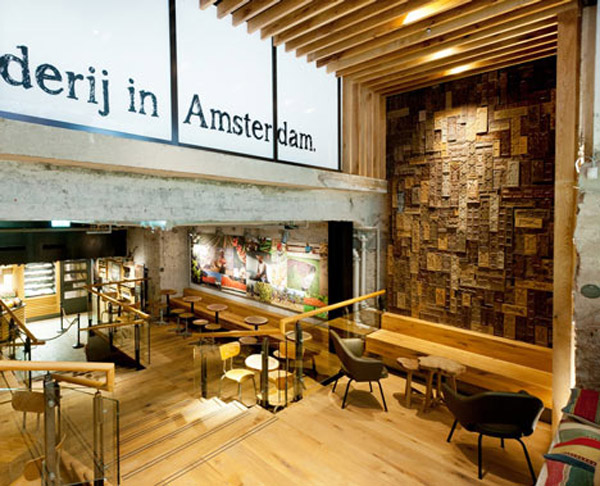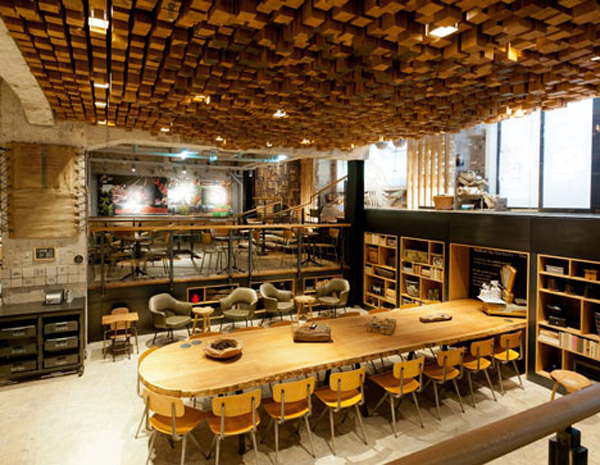Starbucks has come along way since opening its first store way back in 1971 at 1912 Pike Street in Seattle’s famed Pike Place Market. And so have their stores. That first store reflects what Starbucks’ PR department terms a “Heritage” aesthetic: worn wood, stained concrete or tile floors, metal stools and factory-inspired lighting, housing large, community tables, club chairs and wood blinds that evoke a “turn-of-the-last-century feeling.”
But in bringing the $4 latte to both strip malls and the masses (the chain now claims 17,000 retail stores in 55 countries), something of the design aesthetic that first appealed to Northwest’s coffee elites has been lost. So now, in what the Huffington Post has termed “the latest in a series of moves by Starbucks to reclaim its yuppie clientele,” the multinational corporation has been quietly unveiling a series of highly unique and individualized concept stores across America—first in Seattle and New York, and now, Amsterdam.

What makes this Starbucks different from its American strip-mall cousins? It’s hard to even know where to begin. First of all, the new store hearkens back to the Original Starbucks in Seattle in the fact that it is located a landmark historical building, Amsterdamsche Bank, in Amsterdam’s famous Rembrandt Square. Second, it was actually built in the old bank vault.
In designing the store, Dutch-born Liz Muller, Starbucks’ concept design director, commissioned more than 35 artists and craft workers to add artistic and eco touches to the 4,500-square-foot space, creating a radical design departure from your average Starbucks, encapsulated by the store’s ‘Slow’ Coffee Theatre, a kind of open-kitchen coffee bar, with baristas visible from all sides.
In keeping with the chain’s new focus on sustainable building design, “The Bank” is a multilevel space loaded with recycled and local materials, such as antique Delft tiles, walls clad in bicycle inner tubes, and wooden gingerbread molds. Repurposed Dutch oak was put to use in the store’s benches and tables, and in an undulating, textured ceiling relief consisting of 1,876 pieces of individually sawn blocks.
In keeping with the Old World aesthetic, care was taken to retain some of the building’s original details, including its marble floor (dating back to the 1920s) and the bank vault’s exposed concrete. The design also embraces a modern focus with multitiered spaces that also conveniently double as stages for shows by local bands, poetry readings and other cultural events.

The store will also feature an in-house bakery, which will actually tweet its followers when the cookies are hot from the oven.
Dezeen reports that while Starbucks has opened eight other concept stores across the globe over the last three years, this is the first one Starbucks refers to as “laboratory.” Fast Company takes that idea even further, calling it “a lab for reinventing the brand”—making it clear that the unique touches seen in The Bank could spell the future of Starbucks stores all over Europe, and perhaps beyond.